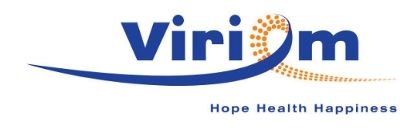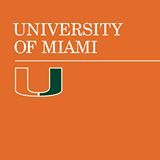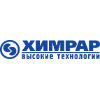预约演示
更新于:2025-05-07

Viriom, Inc.
更新于:2025-05-07
概览
标签
肿瘤
呼吸系统疾病
血液及淋巴系统疾病
小分子化药
疾病领域得分
一眼洞穿机构专注的疾病领域
暂无数据
技术平台
公司药物应用最多的技术
暂无数据
靶点
公司最常开发的靶点
暂无数据
| 排名前五的药物类型 | 数量 |
|---|---|
| 小分子化药 | 3 |
| 排名前五的靶点 | 数量 |
|---|---|
| FLT3(酪氨酸蛋白激酶受体FLT3) | 1 |
| HDAC1(组蛋白去乙酰化酶-1) | 1 |
| CEN x RNA | 1 |
关联
7
项与 Viriom, Inc. 相关的药物靶点 |
作用机制 RT抑制剂 |
在研机构- |
在研适应症 |
非在研适应症 |
最高研发阶段批准上市 |
首次获批国家/地区 俄罗斯 |
首次获批日期2017-06-30 |
靶点 |
作用机制 HDAC1抑制剂 |
在研机构 |
在研适应症 |
最高研发阶段临床2期 |
首次获批国家/地区- |
首次获批日期- |
作用机制 CEN抑制剂 [+1] |
在研机构 |
非在研适应症- |
最高研发阶段临床1期 |
首次获批国家/地区- |
首次获批日期- |
18
项与 Viriom, Inc. 相关的临床试验NCT06932757
Phase 2 Trial of Adjuvant Quisinostat in High-Risk Uveal Melanoma
The purpose of this study is to see if giving participants quisinostat will prevent participants' uveal melanoma tumor from spreading. The researchers want to find out the effects that quisinostat has on participants' condition.
开始日期2025-06-01 |
申办/合作机构  University of Miami University of Miami [+1] |
NCT05165550
A Phase 1, Double-blind, Placebo-controlled Study of Single Ascending Doses of Elsulfavirine to Evaluate the Safety, Tolerability, and Pharmacokinetics of Elsulfavirine and Its Active Metabolite VM-1500A in Healthy Subjects
To assess the safety and tolerability of Elsulfavirine following administration of single oral ascending doses in HIV-negative, healthy subjects.
开始日期2022-04-12 |
申办/合作机构 |
NCT05204394
Multicenter, Open-label, Randomized, Active Control Study to Evaluate Efficacy and Safety of Switching to VM-1500A-LAI + 2NRTIs From the 1st Line Standard of Care Therapy
Multicenter, open-label, randomized, active control study to evaluate efficacy and safety of switching to VM-1500A-LAI + 2NRTIs from the 1st line standard of care therapy for 48 weeks. The 1st part of the study will select one of 2 dose cohorts: 600mg or 900mg.
开始日期2022-04-01 |
申办/合作机构 |
100 项与 Viriom, Inc. 相关的临床结果
登录后查看更多信息
0 项与 Viriom, Inc. 相关的专利(医药)
登录后查看更多信息
7
项与 Viriom, Inc. 相关的文献(医药)2023-11-02·Blood
Therapeutic Targeting of FLT3 Gate Keeper Mutation with E2082-0047 in Traditional and a Novel Immunocompetent Murine Adoptive Transfer Model of AML
作者: Furby, Casie ; Hertlein, Erin K. ; Bryant, Kinsey ; Dokukina, Kate ; Pan, Jianmin ; Savchuk, Nikolay ; Ryakhovskiy, Alexey ; Abagyan, Ruben ; Rai, Shesh N. ; Byrd, John C. ; Johnstone, Megan E. ; Li, Haishan ; Sesterhenn, Thomas M. ; Pauza, C. David ; Sharpe, Chia ; Dukes, Iain ; Lerma, James R. ; Ivachtchenko, Alexandre ; Starczynowski, Daniel T. ; Parchinsky, Vladislav ; Lam, Polo Chun-Hung ; Elgamal, Ola A. ; Fyock, Kaytlynn ; Gukasyan, Hovhannes ; Stearns, Blaise ; Long, Marissa ; Zapata, Juan Carlos ; Burd, Amy ; Fobare, Sydney ; Wronowski, Benjamin ; Orry, Andrew ; Mitkin, Oleg ; Bulanova, Elena ; Karapetian, Ruben ; Kysil, Volodymyr ; Pushechnikov, Alexei
2021-01-01·Journal of Enzyme Inhibition and Medicinal Chemistry2区 · 医学
Biochemical profiling of anti-HIV prodrug Elsulfavirine (Elpida®) and its active form VM1500A against a panel of twelve human carbonic anhydrase isoforms
2区 · 医学
ArticleOA
作者: Nocentini, Alessio ; Kalinin, Stanislav ; Supuran, Claudiu T. ; Yakubova, Elena ; Savchuk, Nikolay ; Krasavin, Mikhail
2020-03-01·European Journal of Medicinal Chemistry1区 · 医学
Synthesis, biological evaluation and in silico modeling of novel integrase strand transfer inhibitors (INSTIs)
1区 · 医学
Article
作者: Karapetian, Ruben N ; Kravchenko, Dmitry V ; Savchuk, Nikolai P ; Ivashchenko, Alexander V ; Koryakova, Angela G ; Mitkin, Oleg D ; Ivanenkov, Yan A ; Aladinskiy, Vladimir A ; Ivashchenko, Andrey A
6
项与 Viriom, Inc. 相关的新闻(医药)2023-12-24
·药明康德
▎药明康德内容团队编辑本期看点1. 新型长效、小容量、皮下注射的补体成分5(C5)抑制剂RLYB116的1期研究结果积极,首次给药100 mg后24小时,游离C5的降幅超过99%。2. 治疗携带GRN基因突变的额颞叶痴呆(FTD)的基因疗法PBFT02在早期临床研究中表现亮眼,前3名患者接受治疗1个月后,脑脊液中关键生物标志物水平均超过生理水平,1名患者已维持了6个月。3. Fostrox联用激酶抑制剂lenvatinib治疗晚期肝细胞癌(HCC)展现积极结果,疾病控制率(DCR)达80%。4. 治疗自闭症和癫痫的小分子疗法IAMA-6在意大利获批启动1期临床试验。药明康德内容团队整理RLYB116:公布1期临床试验数据Rallybio公司公布了其新型长效、小容量、皮下注射C5抑制剂RLYB116的1期多剂量递增研究的初步数据。RLYB116正在开发用于治疗补体介导疾病。此次公布的结果显示,每周一次皮下注射100 mg小容量(1 mL)的RLYB116可使游离C5的平均降幅持续保持在93%以上,包括在第29天最后一次给药前进行的测量。首次给药100 mg后24小时,游离C5的降幅超过99%。RLYB116的平均估计半衰期大于300小时。与每周给药100 mg相比,在每周给药两次、每次100 mg组的患者中观察到了更高的RLYB116浓度,且游离C5的平均降幅超过97%。据观察,每周一次给药100 mg的RLYB116通常耐受性良好。队列中最常见的不良事件是注射部位反应(ISR),队列中有60%的受试者出现了这种反应。该初步结果支持继续开发RLYB116用于治疗全身性重症肌无力。PBFT02:公布1/2期临床试验的初步数据 Passage Bio公布了正在进行的全球1/2期临床试验队列1中三名患者的初步数据,该临床试验旨在评估其基因疗法PBFT02用于治疗GRN基因突变的FTD患者的疗效和安全性。PBFT02使用腺相关病毒1(AAV1)载体将编码颗粒蛋白前体(progranulin,PGRN)的GRN基因功能拷贝输送到患者的细胞中。此次公布的结果显示,接受PBFT02(剂量1)治疗后30天,前三位患者脑脊液中的PGRN水平比基线时增加了3.6-6.6倍,为10.7-17.3 ng/mL,超过了健康成人对照组(n=61)的生理水平(3.3-8.2 ng/mL)。1名患者的PGRN水平在治疗6个月后依然超过生理水平,为27.3 ng/m。接受强化类固醇免疫抑制方案治疗的患者普遍对PBFT02(剂量1)的耐受性良好。Fostroxacitabine bralpamide(fostrox):公布1b/2a期临床试验数据Medivir公司公布了其正在进行的1b/2a期研究的积极中期数据。该研究旨在评估fostrox联用激酶抑制剂Lenvima(lenvatinib)治疗目前一线或二线治疗无效或不能耐受的晚期HCC患者的安全性和疗效。Fostrox是一种核苷酸DNA聚合酶抑制剂口服前药,以肝脏为靶器官,旨在选择性将药物递送到肝细胞中治疗HCC,并将副作用降至最低。该研究目前仍在进行中,约有50%的患者仍在接受治疗,所有患者都已接受了至少12周的随访。此次公布的结果显示,随访时间为12周时,DCR提高到了80%。该联合疗法具有持续的抗肿瘤活性,超过75%患者的靶病灶缩小。此外,该联合疗法的耐受性仍然良好,没有出现意外的新安全事件,减少剂量的需求也低于预期。治疗时间最长的患者在保持部分缓解(PR)16个月后仍在接受治疗。IAMA-6:在意大利获批启动1期临床试验IAMA Therapeutics公司宣布意大利药品管理局(AIFA)已接受其临床试验申请(CTA),将启动一项随机双盲、安慰剂对照的1期首次人体试验,该研究旨在评估其用于治疗自闭症和癫痫的主打候选疗法IAMA-6的安全性、耐受性、药代动力学和药效学。IAMA-6在自闭症谱系障碍和耐药性癫痫方面取得了令人鼓舞的体外和体内概念验证结果。该小分子化合物旨在直接靶向抑制NKCC1和神经元过度兴奋。该公司预计将于2024年1月开始在健康成人中展开1期临床试验。AMT-130:公布1/2期临床试验的新数据uniQure公司公布了其在研基因疗法AMT-130用于治疗亨廷顿病(Huntington’s disease)的1/2期临床试验的新结果。AMT-130是uniQure首个聚焦中枢神经系统的基因疗法,由AAV5载体携带专门沉默HTT基因表达的微RNA(microRNA),利用该公司专有的miQURE沉默技术,抑制突变亨廷顿蛋白的产生。在这项试验中,研究人员利用核磁共振(MRI)成像引导,将基因疗法直接注射到大脑的壳核和尾状核中。这是一种将基因疗法精准递送到中枢神经系统的技术。此次公布的新结果包括在美国、欧洲和英国招募的39名患者的长达30个月的随访数据。结果显示,相比于疾病自然史对照组患者,接受AMT-130治疗的患者表现出神经功能保留的证据,并且具有潜在的剂量依赖性临床获益。患者脑脊液的神经丝蛋白轻链(NfL)平均值继续呈现良好趋势,低剂量组患者在30个月时比基线低6.6%,高剂量组患者在18个月时接近基线。安全性方面,AMT-130两个剂量的耐受性普遍良好。Fadraciclib:公布1期临床试验数据Cyclacel Pharmaceuticals公布了其口服候选药物fadraciclib用于治疗晚期实体瘤和淋巴瘤患者的1期临床试验的中期数据。Fadraciclib是一种细胞周期蛋白依赖性激酶(CDK)2/9抑制剂。CDK对于细胞周期控制和转录调控至关重要,CDK2能够驱动细胞周期转变,CDK9则能够调节基因的转录。Fadraciclib可以通过抑制CDK2和CDK9引起癌细胞凋亡。此次公布的数据显示,已在晚期子宫内膜癌、鳞状非小细胞肺癌(NSCLC)和T细胞淋巴瘤患者中观察到fadraciclib的单药活性,包括完全缓解(CR)、PR和疾病稳定(SD)。在晚期宫颈癌、肝癌、卵巢癌和胰腺癌患者中也观察到了令人鼓舞的活性信号。一名CDKN2B基因缺失的鳞状NSCLC患者在用药一个周期后肿瘤明显缩小。回顾性分析发现,4名接受fadraciclib治疗并获得缓解或SD的患者存在CDKN2A、CDKN2B和/或MTAP基因缺失。AV5124:完成1期临床试验Viriom公司完成了其新型流感病毒复制抑制剂AV5124的1期临床试验。AV5124是一种非常有效的流感病毒复制抑制剂,对所有测试过的流感病毒类型都有很强的抑制作用,包括对神经氨酸苷酶抑制剂Tamiflu或帽依赖性内切酶抑制剂Zoflusa耐药的病毒。此前公布的1期临床研究结果表明,AV5124具有出色的安全性和耐受性。该研究中达到的血药浓度表明病毒在几天内受到持续有效的抑制。AV5124卓越的安全性和已知的抗流感病毒效力支持将该化合物推进到2-3期疗效研究,该研究将在今年流感季节开始。大家都在看药明康德为全球生物医药行业提供一体化、端到端的新药研发和生产服务,服务范围涵盖化学药研发和生产、生物学研究、临床前测试和临床试验研发、细胞及基因疗法研发、测试和生产等领域。如您有相关业务需求,欢迎点击下方图片填写具体信息。▲如您有任何业务需求,请长按扫描上方二维码,或点击文末“阅读原文/Read more”,即可访问业务对接平台,填写业务需求信息▲欲了解更多前沿技术在生物医药产业中的应用,请长按扫描上方二维码,即可访问“药明直播间”,观看相关话题的直播讨论与精彩回放参考资料(可上下滑动查看)[1] Immusoft Administers the First Engineered B Cell in a Human Clinical Trial. Retrieved December 18, 2023, from https://www.businesswire.com/news/home/20231215132846/en[2] NRx Pharmaceuticals Announces FDA Clearance of its Investigational New Drug (IND) Application for NRX-101 in the Treatment of Complicated Urinary Tract Infections. Retrieved December 18, 2023, from https://www.prnewswire.com/news-releases/nrx-pharmaceuticals-announces-fda-clearance-of-its-investigational-new-drug-ind-application-for-nrx-101-in-the-treatment-of-complicated-urinary-tract-infections-302017523.html[3] Avstera Therapeutics Announces FDA Clearance of IND Application for AVS100, a Novel Highly Selective HDAC6 Inhibitor Targeting Solid Tumors. Retrieved December 18, 2023, from https://www.prnewswire.com/news-releases/avstera-therapeutics-announces-fda-clearance-of-ind-application-for-avs100-a-novel-highly-selective-hdac6-inhibitor-targeting-solid-tumors-302017848.html[4] Cyclacel Pharmaceuticals Reports Fadraciclib Phase 1 Data Suggesting Efficacy Against Tumors With CDKN2A, CDKN2B and MTAP Deletions. Retrieved December 18, 2023, from https://www.globenewswire.com/news-release/2023/12/18/2797893/10564/en/Cyclacel-Pharmaceuticals-Reports-Fadraciclib-Phase-1-Data-Suggesting-Efficacy-Against-Tumors-With-CDKN2A-CDKN2B-and-MTAP-Deletions.html[5] ChemDiv Helps Advance Viriom's Influenza Treatment to Successful Phase I Clinical Trials Completion. Retrieved December 19, 2023, from https://www.prnewswire.com/news-releases/chemdiv-helps-advance-virioms-influenza-treatment-to-successful-phase-i-clinical-trials-completion-302018412.html[6] Carina Biotech Doses First Patient in Phase 1/2a Clinical Trial of LGR5-Targeted CAR-T Cell Therapy. Retrieved December 18, 2023, from https://www.globenewswire.com/news-release/2023/12/18/2798182/0/en/Carina-Biotech-Doses-First-Patient-in-Phase-1-2a-Clinical-Trial-of-LGR5-Targeted-CAR-T-Cell-Therapy.html[7] Ethris Initiates First-in-Human Dosing in Phase 1 Study of ETH47 for the Treatment of Virus-Induced Asthma. Retrieved December 18, 2023, from https://www.globenewswire.com/news-release/2023/12/18/2797515/0/en/Ethris-Initiates-First-in-Human-Dosing-in-Phase-1-Study-of-ETH47-for-the-Treatment-of-Virus-Induced-Asthma.html[8] Fostrox + Lenvima demonstrates further improvement in durable clinical benefit in HCC, supporting the accelerated development plan. Retrieved December 20, 2023, from https://www.prnewswire.com/news-releases/fostrox--lenvima-demonstrates-further-improvement-in-durable-clinical-benefit-in-hcc-supporting-the-accelerated-development-plan-302018676.html[9] MBrace Therapeutics Announces Initiation of Patient Dosing in Phase 1 Clinical Trial Evaluating Investigational Antibody-Drug Conjugate MBRC-101. Retrieved December 20, 2023, from https://www.businesswire.com/news/home/20231219616403/en[10] Uvax Bio Receives Approval to Initiate a Phase 1 Clinical Trial of Novel HIV-1 Protein Nanoparticle Vaccine Candidates in Australia. Retrieved December 20, 2023, from https://www.businesswire.com/news/home/20231218981847/en/[11] BioCardia Doses First Patient in CardiALLO Phase I/II Clinical Trial of BCDA-03 Allogeneic Mesenchymal Stem Cells for the Treatment of Ischemic Heart Failure of Reduced Ejection Fraction. Retrieved December 20, 2023, from https://www.globenewswire.com/news-release/2023/12/19/2798416/0/en/BioCardia-Doses-First-Patient-in-CardiALLO-Phase-I-II-Clinical-Trial-of-BCDA-03-Allogeneic-Mesenchymal-Stem-Cells-for-the-Treatment-of-Ischemic-Heart-Failure-of-Reduced-Ejection-Fr.html[12] uniQure Announces Update on Phase I/II Clinical Trials of AMT-130 Gene Therapy for the Treatment of Huntington’s Disease. Retrieved December 20, 2023, from https://www.globenewswire.com/news-release/2023/12/19/2798425/0/en/uniQure-Announces-Update-on-Phase-I-II-Clinical-Trials-of-AMT-130-Gene-Therapy-for-the-Treatment-of-Huntington-s-Disease.html[13] Annexon Reports Phase 1 Results for ANX1502, its Oral Small Molecule Inhibitor of the Classical Complement Pathway. Retrieved December 22, 2023, from https://www.globenewswire.com/news-release/2023/12/20/2799677/0/en/Annexon-Reports-Phase-1-Results-for-ANX1502-its-Oral-Small-Molecule-Inhibitor-of-the-Classical-Complement-Pathway.html[14] Passage Bio Announces Promising Initial Data From Phase 1/2 Clinical Trial of PBFT02 in FTD-GRN and Updated Strategic Priorities. Retrieved December 22, 2023, from https://www.globenewswire.com/news-release/2023/12/20/2799158/0/en/Passage-Bio-Announces-Promising-Initial-Data-From-Phase-1-2-Clinical-Trial-of-PBFT02-in-FTD-GRN-and-Updated-Strategic-Priorities.html[15] Rallybio Announces Preliminary Phase 1 Multiple Ascending Dose Data for RLYB116, an Innovative Subcutaneously Injected Inhibitor of Complement Component 5. Retrieved December 22, 2023, from https://www.businesswire.com/news/home/20231219094324/en[16] Creative Medical Technology Holdings Receives FDA Clearance to Initiate a Phase 1/2 Clinical Trial of StemSpine® using AlloStem™ (CELZ-201-DDT) for the Treatment of Chronic Lower Back Pain. Retrieved December 22, 2023, from https://creativemedicaltechnology.investorroom.com/2023-09-19-Creative-Medical-Technology-Holdings-Receives-FDA-Clearance-to-Initiate-a-Phase-1-2-Clinical-Trial-of-StemSpine-R-using-AlloStem-TM-CELZ-201-DDT-for-the-Treatment-of-Chronic-Lower-Back-Pain[17] SciTech Development Announces First Patient Dosed in Phase 1 Clinical Trial of ST-001. Retrieved December 22, 2023, from https://www.prnewswire.com/news-releases/scitech-development-announces-first-patient-dosed-in-phase-1-clinical-trial-of-st-001-302019518.html[18] IAMA Therapeutics Announces Approval of Clinical Trial Application (CTA) by the Italian Medicines Agency (AIFA) to Initiate a Phase 1 Study of IAMA-6 for the Treatment of Autism and Epilepsy. Retrieved December 22, 2023, from https://www.businesswire.com/news/home/20231220234033/en[19] Almirall Initiates First Phase I Clinical Study of ALM223, an Interleukin 2 Mutant Fusion Protein for Autoimmune Diseases. Retrieved December 22, 2023, from https://www.businesswire.com/news/home/20231221296013/en/[20] Galapagos announces start of PAPILIO-1 Phase 1/2 multiple myeloma study of point-of-care manufactured BCMA CAR-T candidate, GLPG5301. Retrieved December 22, 2023, from https://www.globenewswire.com/news-release/2023/12/19/2798880/0/en/Galapagos-announces-start-of-PAPILIO-1-Phase-1-2-multiple-myeloma-study-of-point-of-care-manufactured-BCMA-CAR-T-candidate-GLPG5301.html免责声明:药明康德内容团队专注介绍全球生物医药健康研究进展。本文仅作信息交流之目的,文中观点不代表药明康德立场,亦不代表药明康德支持或反对文中观点。本文也不是治疗方案推荐。如需获得治疗方案指导,请前往正规医院就诊。版权说明:本文来自药明康德内容团队,欢迎个人转发至朋友圈,谢绝媒体或机构未经授权以任何形式转载至其他平台。转载授权请在「药明康德」微信公众号回复“转载”,获取转载须知。分享,点赞,在看,聚焦全球生物医药健康创新
基因疗法临床结果临床1期
2023-12-19
SAN DIEGO, Dec. 19, 2023 /PRNewswire/ -- ChemDiv Inc., dedicated to partnering in discovery and development of breakthrough therapies based on its unique chem-bio platforms, announces successful completion of Phase I clinical trials for AV5124, an innovative influenza virus replication inhibitor being developed by Viriom Inc. (Viriom).
AV5124 is an extremely effective inhibitor of influenza virus RNA processing that is potent against all tested influenza types including viruses resistant to neuraminidase inhibitors (Tamiflu®) or cap-dependent endonuclease inhibitors (Xofluza®). Together, Viriom and ChemDiv showcase AV5124's potent suppression of diverse Influenza A and Influenza B viruses, including drug-resistant variants and highly pathogenic avian influenza strains.
The completion of Phase I clinical trials stands as a testament to AV5124's remarkable safety and tolerability. Blood drug levels achieved in the study indicate sustained and potent virus suppression over several days, marking a significant milestone in the pursuit of an effective therapy for seasonal or pandemic influenza.
About ChemDiv:
ChemDiv is dedicated to partnering in the discovery and development of breakthrough therapies based on its unique chem-bio platforms: molecular glues, stabilizers and degraders; covalent and non-covalent binders; bifunctional molecules for synergistic effect and synthetic lethality. Over the past 32 years, ChemDiv has successfully completed hundreds of leads, candidate and new drug programs to treat cancer, neurological, infectious, cardiometabolic and immune diseases with partners globally. Learn more at .
About Viriom Inc.
Viriom Inc. is at the forefront of advancing a pipeline of effective and affordable treatments for diseases of global interest. With a robust network of partners, Viriom is building a global drug development platform targeting infectious and malignant diseases. The company focuses on blood-borne and respiratory viral diseases, as well as cancers for which effective therapies are not available. Learn more at
For further information, please contact:
Bill Farley
CEO of ChemDiv
Bfarley@chemdiv.com
SOURCE ChemDiv
临床1期siRNA
2023-11-26
·药明康德
▎药明康德内容团队编辑本期看点1. 创新细菌肽免疫疗法联合免疫检查点抑制剂在进展/复发性胶质母细胞瘤患者中展现强大疗效,患者中位生存期达14.5个月,中位缓解持续时间为13.1个月。2. 新型口服小分子NLRX1激动剂治疗溃疡性结肠炎效果显著,总体梅奥评分和症状缓解方面都出现了持续、快速的临床改善。3. Karuna Therapeutics的精神分裂症药物KarXT安全性良好,不会造成有临床意义的血压升高。4. 下一代BRAF突变体选择性抑制剂显著改善了患有BRAF V600突变型晚期实体瘤患者的预后,总缓解率(ORR)达41.7%。药明康德内容团队整理VMB-100:IND申请获得许可Versameb公司宣布,美国FDA已批准VMB-100的IND申请,用于治疗压力性尿失禁。VMB-100是一种编码人胰岛素样生长因子-1(IGF-1)的工程化mRNA分子,可通过肌肉局部给药。压力性尿失禁是一种非常常见的疾病,由于尿道括约肌功能减弱而导致尿液不自主漏出。临床前研究表明,VMB-100能诱导人体肌肉细胞中IGF-1的表达。在压力性尿失禁动物模型中,VMB-100加快了尿道括约肌的再生,并在单剂量治疗后恢复了尿道括约肌的功能。Versameb公司计划于2024年上半年在患有中度压力性尿失禁的女性受试者中开展VMB-100的2a期开放标签、剂量递增临床研究。VBI-1901:公布1/2a期临床试验数据VBI Vaccines公布了其癌症疫苗候选药物VBI-1901在复发性胶质母细胞瘤(GBM)患者中进行的1/2a期临床研究中获得的更多生物标志物数据。VBI-1901是一种新型癌症疫苗,采用VBI公司的包膜病毒样颗粒(eVLP)技术开发,可靶向两种高免疫原性多巨细胞病毒(CMV)抗原——gB和pp65。新的机制验证数据表明,接种VBI-1901与T细胞活化有关,使得T细胞能穿过血脑屏障进入肿瘤微环境,而肿瘤微环境是一个众所周知的高度免疫抑制、免疫细胞难以浸润的区域。此次公布的外周生物标记物数据评估了C4G的水平——这是细胞毒性T细胞迁移至、并在整个肿瘤微环境中运动时产生的一种蛋白质片段。在既往针对转移性黑色素瘤患者进行的研究中,高基线水平的C4G被发现与较长的总生存期有关。此次公布的数据显示,接种VBI-1901后,实现部分肿瘤缓解的患者血液/血浆中的C4G水平高于病情稳定或进展的患者。此外,接种VBI-1901后,较高水平的C4G与较长的无进展生存期有关。美国FDA认为,与随机对照组相比,治疗组总体生存期在统计学上有显著改善且具有临床意义,并将此作为支持批准新肿瘤药物的标准。Enterome:公布1/2期临床试验数据Enterome公司公布了其1/2期临床试验——EO2401联合免疫检查点抑制剂(纳武利尤单抗)+/-抗VEGF疗法(贝伐珠单抗)治疗首次进展/复发性胶质母细胞瘤患者(ROSALIE试验)的最新疗效数据。11月17日,在神经肿瘤学会(SNO)年会上,该公司作了口头报告。EO2401是一款现货型癌症免疫疗法,它结合了三种细菌肽,这些肽分子来源于肠道微生物群中的细菌,与实体瘤和液体瘤中过表达的肿瘤相关抗原(TAA)或种系特异性标记物密切相似。此外,EO2401还含有CD4辅助肽UCP2。该疗法旨在激活原有的效应记忆T细胞,从而对癌症产生快速、靶向的细胞毒反应。EO2401与纳武利尤单抗和贝伐珠单抗联合用于26例复发性胶质母细胞瘤患者(队列3)。试验结果显示,该联合疗法的耐受性良好,安全性与纳武利尤单抗和贝伐珠单抗一致,只是局部用药部位不良反应略有增加。该联合疗法取得了积极结果:患者中位生存期为14.5个月,中位缓解持续时间为13.1个月,中位无进展生存期(PFS)为5.5个月;第12个月和第18个月的生存率分别为57.4%和43.1%。EO2401与纳武利尤单抗治疗组合对其所靶向的肿瘤相关抗原(IL13Rα2、BIRC5/survivin和FOXM1)产生了快速、强烈和持久的全身免疫应答。队列3中,23名患者对EO2401产生了特异性CD8+T细胞应答,所有这些患者的CD8+T细胞都与其所靶向的TAA产生了交叉反应。HB-500:IND申请获得许可HOOKIPA Pharma宣布其用于治疗人类免疫缺陷病毒(HIV)的新型沙粒病毒治疗性疫苗HB-500的IND申请已获得美国FDA的批准。HB-500是一种双载体沙粒病毒治疗性疫苗,用于治疗HIV感染。一种载体以淋巴细胞性脉络丛脑膜炎病毒(LCMV)为骨架,另一种载体以Pichinde病毒(PICV)为骨架。基于这两种载体的核酸载荷编码相同的HIV抗原。双载体交替使用的方法旨在进一步集中针对目标抗原的免疫反应。HB-500的临床前研究结果最近发表在学术期刊Vaccines上,该研究为提交IND申请奠定了基础。在非人灵长类动物中,该疫苗接种的耐受性良好,并能产生强大、高质量和持久的免疫反应(抗原特异性T细胞和抗体)。与安慰剂相比,接种疫苗可显著降低这些动物体内的类人免疫缺陷病毒(作为HIV的实验替代物模拟其作用)的病毒载量和临床病症。HB-500是HOOKIPA公司与吉利德科学(Gilead Sciences)签订的研发合作和许可协议中两个独立开发项目之一。HOOKIPA公司负责通过完成1b期临床试验来推进HIV项目。此后,吉利德拥有进一步开发该项目的专有权。NX-13:公布1b期临床试验数据Landos Biopharma在学术期刊Journal of Crohn's and Colitis上发表了NX-13治疗溃疡性结肠炎的1b期临床试验的安全性、耐受性、药代动力学特征和临床疗效结果。NX-13是该公司开发的一种新型口服小分子NLRX1激动剂,NLRX1是一种具有调节免疫反应能力的线粒体相关受体,通过激活NLRX1通路可以增加免疫细胞中的氧化磷酸化、减少效应CD4+ T细胞的分化,并减少胃肠道中炎性细胞因子的产生。研究发现,大多数患者在接受为期四周的NX-13治疗后,在总体梅奥评分和症状缓解(以直肠出血和大便次数来衡量)方面都出现了持续、快速的临床改善。此外,试验中观察到的内镜改善与症状改善密切相关。所有患者对NX-13的耐受性良好,没有出现死亡或严重不良反应的报告,所有不良反应均为轻度至中度。KarXT:公布1b期临床试验数据Karuna Therapeutics公布了为期八周的1b期开放标签的住院患者试验的积极结果,该试验评估了KarXT(xanomeline-trospium)对成人精神分裂症患者24小时非卧床血压的影响,试验结果表明KarXT与血压升高无关。KarXT是一款在研口服M1/M4型毒蕈碱乙酰胆碱受体激动剂,由xanomeline和trospium chloride两种有效成分构成,旨在激活大脑中的毒蕈碱型乙酰胆碱受体的同时,减少对外周毒蕈碱型乙酰胆碱受体的作用。这款疗法由Karuna Therapeutics开发,再鼎医药(Zai Lab)拥有这款创新疗法在大中华区的研发权益。该试验的主要终点是第8周时24小时平均非卧床收缩压与基线相比的变化。试验结果表明,受试者24小时动态收缩压从基线到第8周的平均变化为-0.59 mmHg。从基线到第8周的平均血压变化的双侧95%置信区间的上限为1.60 mmHg,这一结果排除了因KarXT治疗造成的有临床意义的血压升高(根据FDA指南,与基线相比的变化≥3 mmHg即为有临床意义的血压升高)。白天和夜间的收缩压测量结果显示没有明显变化,与24小时平均值基本一致。试验中收集的其他生命体征测量数据,包括24小时平均舒张压和心率,与之前针对精神分裂症患者进行的KarXT试验结果一致。此外,KarXT的耐受性总体良好,副作用情况与之前的临床试验一致。Plixorafenib:公布1/2a期临床试验数据FORE Biotherapeutics公布了评估plixorafenib(又名FORE8394,PLX8394)的1/2a期临床试验的最新安全性和疗效数据。Plixorafenib是一款可口服的下一代小分子BRAF突变体选择性抑制剂,旨在靶向广泛的BRAF突变,同时不影响野生型RAF蛋白的活性。此次公布的研究结果继续显示了该药物针对BRAF V600突变肿瘤(包括原发性中枢神经系统肿瘤)的单药活性。在9名患有BRAF V600突变的原发性中枢神经系统肿瘤、并且未接受过MAPK抑制剂治疗的患者中,有6人实现了缓解,总缓解率为66.7%(95% CI:29.9,92.5)。此外,中位缓解时间为13.9个月(范围:3.7,32.3),其中4/6(67%)的治疗响应者的缓解时间超过6个月。试验过程中,低级别胶质瘤和胶质神经元肿瘤患者的中位无进展生存期尚未达到(范围:1.6至27.8个月;n=4),高级别胶质瘤患者的中位无进展生存期为6.7个月(范围:2.8至34.1个月;n=5)。在24名患有BRAF V600突变型晚期实体瘤、且未接受过MAPK抑制剂治疗的患者中,有10人达成缓解,总缓解率为41.7%。这些患者的中位缓解时间为17.8个月(范围:3.7至59.2个月)。BRAF V600突变型实体瘤患者(包括之前接受过MAPK抑制剂治疗的患者)的中位应缓解时间为3.5个月。与已获批准的BRAF/MEK抑制剂相比,plixorafenib继续表现出良好的耐受性,出现症状性治疗突发不良事件(TEAE)的频率较低。症状性TEAE几乎均为1级,头痛是唯一的症状性≥3级治疗伴发不良事件,发生率>5%。此外,原发性中枢神经系统肿瘤患者的安全性与总体观察结果一致。AV5124:公布1期临床试验数据Viriom公司公布了新型流感病毒复制抑制剂AV5124的1期临床试验的积极结果。AV5124是一种非常有效的流感病毒RNA处理抑制剂,对所有测试过的流感类型都有很强的抑制作用,包括对神经氨酸苷酶抑制剂Tamiflu或帽依赖性内切酶抑制剂Zoflusa耐药的病毒。最近的1期临床研究结果表明,AV5124具有出色的安全性和耐受性。该研究的血药浓度与单次口服后数天的病毒抑制效果一致。AV5124卓越的安全性和已知的抗流感病毒效力支持将该化合物推进到2-3期疗效研究,该研究将在今年流感季节开始。KH-001:IND申请获得许可美国FDA和英国药品和健康产品管理局(MHRA)分别批准了Kanna Health旗下药物KH-001的新药临床试验申请(IND)和临床试验申请(CTA),以研究KH-001在健康男性受试者中的安全性和药代动力学特征。KH-001是一种独特的、按需定制的药物,是首个获得FDA许可用于早泄治疗的药物。大家都在看▲欲了解更多前沿技术在生物医药产业中的应用,请长按扫描上方二维码,即可访问“药明直播间”,观看相关话题的直播讨论与精彩回放参考资料(可上下滑动查看)[1] Versameb AG Announces FDA Clearance of IND Application for VMB-100 in the Treatment of Stress Urinary Incontinence,Retrieved November 23, 2023 from https://www.prnewswire.com/news-releases/versameb-ag-announces-fda-clearance-of-ind-application-for-vmb-100-in-the-treatment-of-stress-urinary-incontinence-301990373.html[2] Immix Biopharma Announces FDA Approval of IND Application for CAR-T NXC-201, Enabling U.S. Patient Dosing,Retrieved November 23, 2023 from https://www.biospace.com/article/releases/immix-biopharma-announces-fda-approval-of-ind-application-for-car-t-nxc-201-enabling-u-s-patient-dosing/[3] VBI Vaccines Presents Additional Biomarker Data from Phase 1/2a Study of VBI-1901 in Recurrent GBM at the 2023 Society for Neuro-Oncology (SNO) Annual Meeting,Retrieved November 23, 2023 from https://www.businesswire.com/news/home/20231120733718/en/[4] Enterome’s OncoMimics™ Immunotherapy EO2401 Significantly Improves Survival Rate in Recurrent Glioblastoma,Retrieved November 23, 2023 from https://www.enterome.com/news-events/enterome-oncomimics-immunotherapy-eo2401-significantly-improves-survival-recurrent-glioblastoma/[5] HOOKIPA Pharma Announces FDA Clearance of its Investigational New Drug Application for HB-500 for the Treatment of Human Immunodeficiency Virus,Retrieved November 23, 2023 from https://ir.hookipapharma.com/news-releases/news-release-details/hookipa-pharma-announces-fda-clearance-its-investigational-new[6] ProMIS Neurosciences Doses First Subjects in Phase 1a Clinical Trial of PMN310 to Treat Alzheimer’s Disease,Retrieved November 23, 2023 from https://www.promisneurosciences.com/news-media/press-releases/detail/212/promis-neurosciences-doses-first-subjects-in-phase-1a#:~:text=%E2%80%9CIn%20this%20Phase%201a%20clinical,the%20first%20half%20of%202024.[7] Landos Biopharma Publishes Results of NX-13 Phase 1b Study in Ulcerative Colitis in Journal of Crohn’s and Colitis,Retrieved November 23, 2023 from https://www.biospace.com/article/releases/landos-biopharma-publishes-results-of-nx-13-phase-1b-study-in-ulcerative-colitis-in-journal-of-crohn-s-and-colitis/[8] PureTech Founded Entity Karuna Therapeutics Announces Positive Results from Phase 1b Ambulatory Blood Pressure Monitoring Trial of KarXT in Schizophrenia,Retrieved November 23, 2023 from https://www.businesswire.com/news/home/20231116001299/en/[9] FORE Biotherapeutics Announces Oral Presentation at SNO 2023 Reporting Updated Phase 1/2a Results for Plixorafenib in BRAF V600 Advanced Solid Tumors, Including Novel Data for Patients with BRAF V600 Primary CNS Tumors,Retrieved November 23, 2023 from https://www.businesswire.com/news/home/20231117112617/en[10] Viriom's Single Pill Influenza Treatment Completes Critical Phase I Clinical Trials,Retrieved November 23, 2023 from https://www.prnewswire.com/news-releases/virioms-single-pill-influenza-treatment-completes-critical-phase-i-clinical-trials-301992666.html[11] Kanna Health announces FDA and MHRA approvals to begin its Phase 1 clinical trial for the development of KH-001 as first FDA-approved treatment for premature ejaculation,Retrieved November 23, 2023 from https://www.prnewswire.com/news-releases/kanna-health-announces-fda-and-mhra-approvals-to-begin-its-phase-1-clinical-trial-for-the-development-of-kh-001-as-first-fda-approved-treatment-for-premature-ejaculation-301987933.html免责声明:药明康德内容团队专注介绍全球生物医药健康研究进展。本文仅作信息交流之目的,文中观点不代表药明康德立场,亦不代表药明康德支持或反对文中观点。本文也不是治疗方案推荐。如需获得治疗方案指导,请前往正规医院就诊。版权说明:本文来自药明康德内容团队,欢迎个人转发至朋友圈,谢绝媒体或机构未经授权以任何形式转载至其他平台。转载授权请在「药明康德」微信公众号回复“转载”,获取转载须知。分享,点赞,在看,聚焦全球生物医药健康创新
免疫疗法疫苗临床申请信使RNA临床1期
100 项与 Viriom, Inc. 相关的药物交易
登录后查看更多信息
100 项与 Viriom, Inc. 相关的转化医学
登录后查看更多信息
组织架构
使用我们的机构树数据加速您的研究。
登录
或

管线布局
2025年12月27日管线快照
管线布局中药物为当前组织机构及其子机构作为药物机构进行统计,早期临床1期并入临床1期,临床1/2期并入临床2期,临床2/3期并入临床3期
临床前
1
1
临床1期
临床2期
1
4
其他
登录后查看更多信息
当前项目
| 药物(靶点) | 适应症 | 全球最高研发状态 |
|---|---|---|
Quisinostat Hydrochloride ( HDAC1 ) | 葡萄膜黑色素瘤 更多 | 临床2期 |
AV-5124 ( CEN x RNA ) | 流感病毒感染 更多 | 临床1期 |
E2082-0047 ( FLT3 ) | 急性髓性白血病 更多 | 临床前 |
VM-1500A ( RT ) | HIV感染 更多 | 无进展 |
Elsulfavirine ( RT ) | HIV感染 更多 | 无进展 |
登录后查看更多信息
药物交易
使用我们的药物交易数据加速您的研究。
登录
或

转化医学
使用我们的转化医学数据加速您的研究。
登录
或

营收
使用 Synapse 探索超过 36 万个组织的财务状况。
登录
或

科研基金(NIH)
访问超过 200 万项资助和基金信息,以提升您的研究之旅。
登录
或

投资
深入了解从初创企业到成熟企业的最新公司投资动态。
登录
或

融资
发掘融资趋势以验证和推进您的投资机会。
登录
或

生物医药百科问答
全新生物医药AI Agent 覆盖科研全链路,让突破性发现快人一步
立即开始免费试用!
智慧芽新药情报库是智慧芽专为生命科学人士构建的基于AI的创新药情报平台,助您全方位提升您的研发与决策效率。
立即开始数据试用!
智慧芽新药库数据也通过智慧芽数据服务平台,以API或者数据包形式对外开放,助您更加充分利用智慧芽新药情报信息。
生物序列数据库
生物药研发创新
免费使用
化学结构数据库
小分子化药研发创新
免费使用

